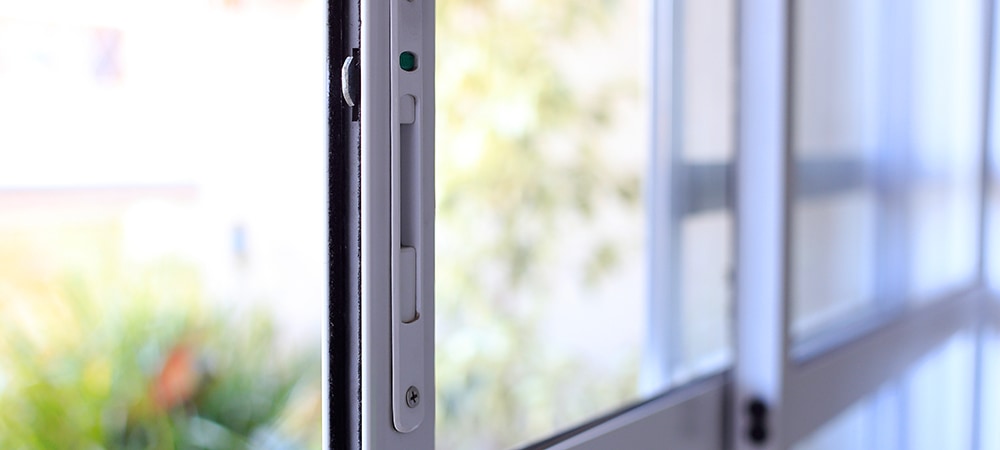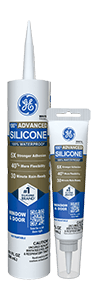Note: This DIY article is provided as a general guide only and is not intended to take the place of product-specific installation procedures; always follow applicable manufacturers’ instructions. Depending on your home’s age and condition, location within the home, and other potential factors, repairs and/or upgrades or other services may be necessary prior to the beginning and/or completion of your project that may involve the services of a home improvement professional. This article does not include advice pertaining to local building codes and/or any related inspections.
As a homeowner, it is always in your best interest to seal any gaps or cracks to keep moisture, drafts, and pests away. However, there is an exception to the rule. In this article, we let you know how caulking specifically installed holes (weep holes) in your windows may be the start of costly maintenance and repairs.
Read on to understand everything concerning window weep holes before sealing your windows.
Window weep holes allow window frames to drain water and moisture and, therefore, should not be blocked when sealing windows.
What are weep holes in windows?
Window weep holes are a clever addition to the normal window architecture. As the name suggests, they can be solitary or have multiple openings on the face of the window that vary in shape, size, and location. Typically located on the bottom part of windows, they are commonplace in sliding windows, double-hung windows, and other windows with sashes that can collect water.
Window weep holes drain the window’s frame of moisture and water that may accumulate within the structure. If you live in an area that experiences heavy snowfall, rain, or humidity, you should expect a weep hole in the structure of your window.
Why you shouldn’t cover weep holes in windows
Since weep holes drain your window’s frame of built-up moisture, what happens when you accidentally apply a sealant over the weep hole? To fully understand the implications of this action, you should familiarize yourself with the effects of stagnant water on surfaces such as metal, vinyl, steel, aluminum, or fiberglass.
Here are some of the consequences of intentionally or accidentally covering window weep holes:
Water damage
Trapped water poses a significant threat to the structural components of your window. Whether by corrosive action, rotting, or rusting, water can completely alter the chemical and structural nature of the materials in your window making them inefficient. Additionally, water damage may spread to the surrounding walls.
Condensation issues
Weep holes in windows provide an avenue for water to safely leave the window’s frame. Without this clear path, the water remains trapped. Consequently, your views may be obstructed by foggy windows on a hot day as condensation occurs.
Reduced window lifespan
Almost everyone attempts to either save their hard-earned money or increase the comfort they experience from their home. With blocked window weep holes, you may miss out on both thanks to the water damage incurred on your windows. This might mean a shorter period between repairs and replacements for your windows that cumulatively become expensive.
How to clean weep holes in windows
Weep holes in windows require minimal repair and maintenance during their lifespan and often last just as long as the window itself. However, they may occasionally become clogged by dirt and debris. To clean your window weep hole, you may insert a flat-head screwdriver into the openings and in sweeping movements run side-to-side to dislodge any obstructions.
You must be delicate during the cleaning process as any widening of the weep holes may reverse their function from being outlets to being inlets of water and moisture further contributing to the damage they were intended to solve.
How to properly seal a window without blocking the weep holes
You know what weep holes are, you know what they do, and now it’s time to find out how to avoid blocking them when applying sealant. Sealing your windows remains an imperative undertaking to ensure your home remains moisture, draft, and pest-free. Below is the best approach to ensure none of your maintenance work digs deeper into your pockets.
Identify the location of the weep holes
Before you begin any repair or maintenance work on your windows, you should first attempt to identify the location of the weep holes. As mentioned earlier, they are typically located on the face side of the window along the bottom margin. Different manufacturers may orient them differently.
Sometimes weep holes may be hidden from sight in pursuit of aesthetics.
Clean the surfaces
For maximum bonding strength, you should ensure that the surfaces that come in contact with the sealant are free from dirt and debris. While cleaning these surfaces, you should also spare some time and attention to cleaning the weep holes. This will ensure there is no additional maintenance work once you seal your window.
Apply the sealant
Once the surfaces are clean, the next step is to apply the sealant. Choosing the appropriate material for this step is essential for long-term results. For small gaps, prioritize sealant over spray foam. Do not use caulk for exterior surfaces that may be exposed to the elements. High-quality sealants provide a waterproof and weatherproof defensive barrier that effectively locks out moisture, drafts, and pests.
Using a caulking gun, apply the sealant on the primed surface and allow it to dry and cure to achieve maximum bonding strength. After application, you can smooth out the sealant with a gloved finger.
Install weep hole covers when possible
Some manufacturers provide weep-hole covers for their window weep holes. When available, you should install them over the weep holes while ensuring they remain porous to moisture.
Carry out regular maintenance
Don’t just turn a blind eye to your window and its weep holes once you seal it. It would be best to regularly inspect the window for gaps or cracks while monitoring for signs of damage (evidenced by peeling). You should also ensure the weep holes are free from obstruction. Early detection and repair guarantee a longer lifespan for your window.
Sealing your window is an important step toward achieving the pinnacle of comfort and energy efficiency. When done right, the appropriate sealant grants your window longevity and durability. However, caution should be taken to avoid blocking window weep holes to avoid inadvertently causing more harm than good.
To find GE products near you, check out our Where to Buy page.
FAQs
Below are some of the frequently asked questions concerning weep holes in windows.
Do all windows have weep holes?
Not all windows have weep holes. Weep holes are primarily found in metal and vinyl windows, and may be missing in other window structures.
What happens when I accidentally block my window weep holes?
Blocking your window weep holes predisposes the window structure to water damage, rust, and corrosion ultimately reducing your window’s lifespan.
Can I cover weep holes to keep pests away?
Some weep holes are fitted with special porous covers to retain their drainage capabilities while preventing the entry of pests.


